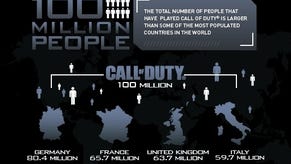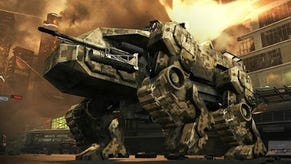Face-Off: Call of Duty: Black Ops
No contest.
There are some visual differences in other areas of the game. Looking across our captures, we can see instances where the PS3 or 360 versions appear to be running with lower-resolution textures. In many cases this is probably down to the background streaming with the higher-resolution art transitioning in. In other areas, it appears to be down to small bugs in the rendering. In the very first scene on PS3 we see Woods' cigarette packet transitioning from what seems to be a high-res texture into a lower-res one, while the same art remains consistent on 360.


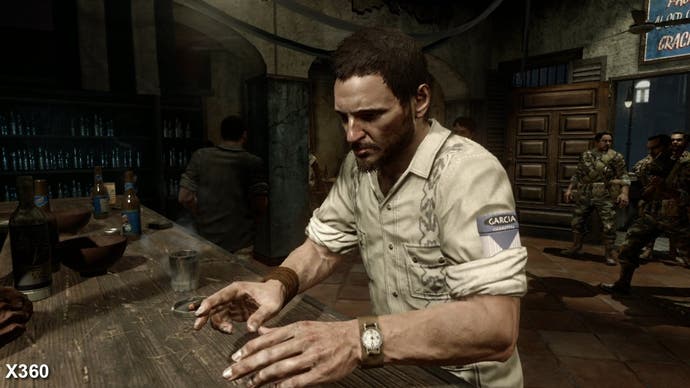
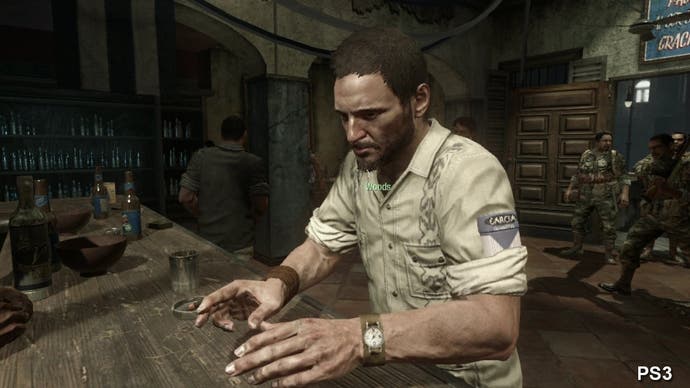
In other areas we see some pretty dramatic changes to the scene in terms of shadowing. In one scene the character pulls off a cover from the motorbike, which doesn't properly cover it on PS3, but does on 360. A bug with a shadow off-set bias issue on the ground, maybe? None of this is exactly going to affect your enjoyment of the game or factor into a purchasing decision, but does seem to indicate an attention-to-detail issue in development that mostly affects just the PS3 version of Black Ops.
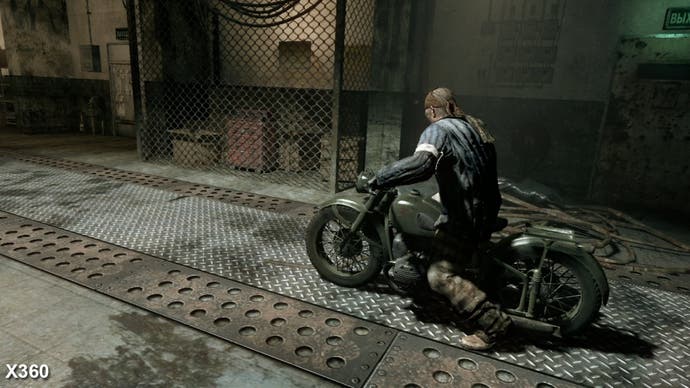

In other areas we do see a 360 advantage with the computationally expensive business of shadowing. Shadows, at least for characters, appear to be more poorly filtered and of a lower resolution on the PS3.
Returning to the headline features of the game, 3D support is built in to Black Ops on both consoles. It's interesting to note that while the exact implementation for the 3D varies on each platform, the overall effect is much the same. The PlayStation 3 makes use of the HDMI 1.4 standard, producing a 1280x1470 vertically stacked output - 720p's worth of image per eye with a 30-line black border in between them. The Xbox 360 runs with a different approach, crunching down horizontal resolution so that the viewpoint of each eye is crammed into a conventional 720p image. This "side-by-side" image is then extrapolated outwards by the TV and redirected to each eye.
In theory, the PlayStation 3 commands the advantage here as there's literally double the resolution being transmitted from the HDMI port. In practice, though, it seems to be the case that, despite the HDMI 1.4 output format, the image is still being squeezed horizontally in much the same way as the Xbox 360's, the difference being that the console is doing the scaling rather than the screen. If we overlay an expanded 360 screen over the equivalent PS3 image, we can still seem to see more detail being resolved.
The horizontal scaling makes figuring out the exact resolution very difficult, but with both the Xbox 360 and PS3 games, the 2D versions' vertical res seems to remain the same. It's just an educated guess right now, but bearing in mind the frame-rate penalties (which we'll discuss shortly), the overall impression is that native 2D resolution is being downscaled then upscaled again on both systems. In-game text is made bigger in order to preserve readability post-upscaling. This is a departure from the 2D mode where the sub-HD image gets a native 720p HUD. The fact that we see this on PS3 suggests that the RSX's horizontal hardware scaler is being used, as it is in the 3D implementation of Killzone 3 we saw at E3.
Here are a couple of comparison shots illustrating the composition of the framebuffer being sent out to the 3DTV.
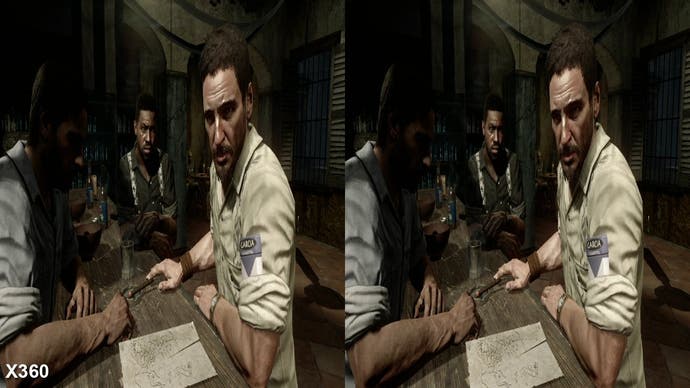


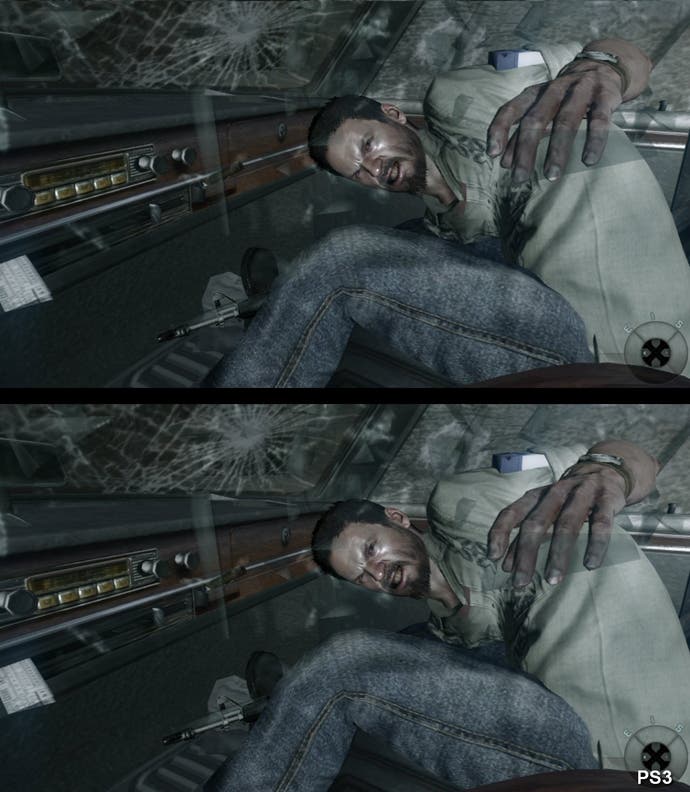
For a game that targets a 60 frames per second update, the simple solution in moving to 3D is to sacrifice half your frame-rate and generate two images - an approach seen in SCEE's own 3D rendition of WipEout HD. However, instead of capping the frame-rate to 30FPS, Treyarch allows the engine to run unlocked, so when conditions allow you do get a faster refresh. But there's a strong argument that a sustained, capped frame-rate offers a more pleasing sensation for gameplay - something you can check out for yourself by playing BioShock or BioShock 2 on PS3, where the option to select either is available to the player.
Performance analysis of the 3D mode directly compared to the default 2D mode shows how closely linked the performance level is, on the Xbox 360 version of the game at least. There are similar peaks and troughs in the like-for-like sections of the analysis, but obviously the 2D runs at a much faster lick of speed. During gameplay, we see that much more intense action impacts the 2D version much more, while the slower 3D refresh manages to operate in a more sustained manner.
The 3D version of Black Ops on PS3 really isn't very satisfying at all, unfortunately. The 2D game already operates with a clear performance deficit in comparison to the 360 version and the additional drag factor of rendering for both eyes can impact playability immensely at times. We've logged the PS3 game running as low as 20FPS - and that's just in the very first street battle in the initial Cuba level.



